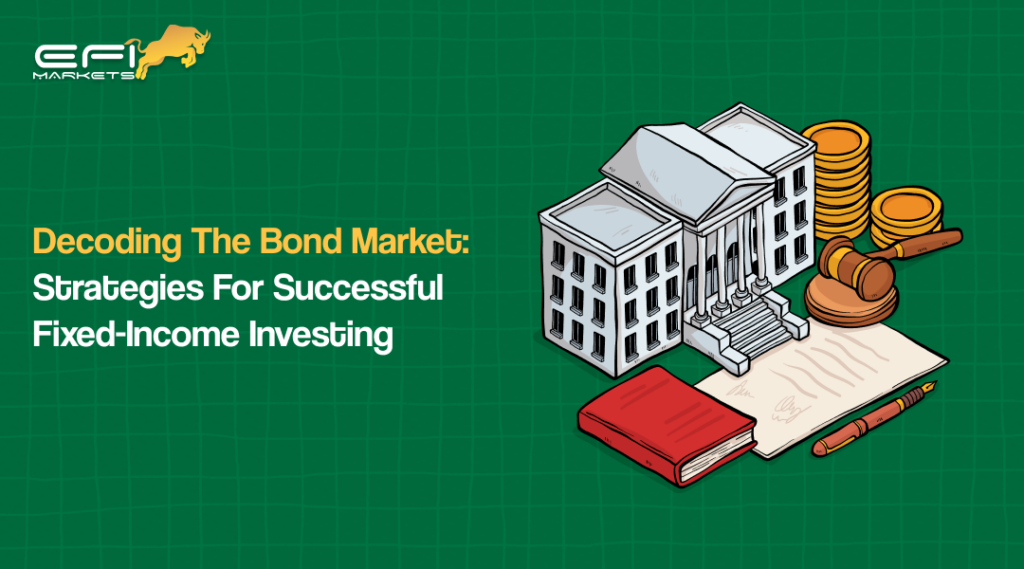
Introduction:
In the vast ocean of investment options, the bond market stands as a formidable entity, often misunderstood yet offering a myriad of opportunities for savvy investors. Fixed-income investing, characterized by its stability and income generation, forms a crucial aspect of any well-rounded investment portfolio. However, understanding the intricacies of the bond market and adopting strategic approaches to maximize returns while managing risks is essential. In this guide, we’ll decode the bond market, unravel its complexities, and explore effective strategies for successful fixed-income investing.
Understanding Bonds:
Before diving into strategies, let’s first grasp the fundamental concept of bonds. Bonds are debt securities issued by governments, municipalities, or corporations to raise capital. When you purchase a bond, you’re essentially lending money to the issuer in exchange for periodic interest payments (coupon payments) and the return of the principal amount at maturity. Bonds come in various forms, including government bonds, municipal bonds, corporate bonds, and treasury bonds, each with its unique risk and return profile.
Strategies for Successful Bond Market Fixed-Income Investing:
1. Diversification is Key:
Diversifying your investments can mitigate the impact of adverse events affecting any single bond or sector.
2. Assess Risk Tolerance:
Understanding your risk tolerance is crucial in determining your bond investment strategy. Generally, bonds with higher credit quality (such as government bonds) offer lower returns but greater stability, making them suitable for conservative investors. On the other hand, risk-tolerant investors may opt for high-yield bonds or corporate bonds, which offer higher returns but come with increased credit risk.
3. Match Duration with Investment Goals:
Aligning the duration of your bond investments with your investment goals and interest rate outlook is vital. For instance, if you anticipate rising interest rates, consider investing in shorter-duration bonds to minimize interest rate risk.
4. Stay Informed and Adapt:
Various factors, such as economic indicators, monetary policy decisions, and geopolitical events, influence the bond market. Staying informed about market trends, interest rate movements, and issuer-specific developments can help you make informed investment decisions. Be prepared to adapt your strategy based on changing market conditions and economic outlook.
5. Consider Professional Management:
For investors seeking a hands-off approach, consider investing in bond mutual funds or exchange-traded funds (ETFs) managed by professional portfolio managers. These funds provide diversified exposure to the bond market and are actively managed to optimize returns while managing risk.
Conclusion:
In the realm of investment, the bond market offers a haven of stability and income generation. However, navigating its complexities requires careful consideration and strategic planning. By diversifying your investments, assessing risk tolerance, aligning duration with investment goals, staying informed, and considering professional management, you can unlock the potential of fixed-income investing and achieve your financial objectives with confidence.
